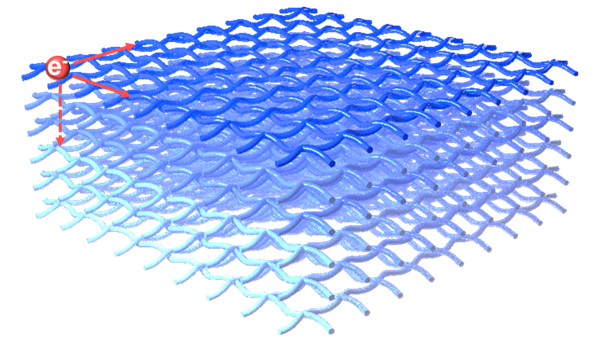An international research team of researchers has synthesized a multilayered two-dimensional polyaniline (2DPANI) crystal, achieving unique metallic out-of-plane charge transport and high conductivity. This study was published in Nature.
Conducting polymers, such as polyaniline, polythiophene, and polypyrrole, are renowned for their electrical conductivity and have significant potential as low-cost, lightweight, and flexible alternatives to traditional semiconductors and metals.
However, efficient charge transport, particularly between polymer chains, has been a critical challenge, thereby limiting the performance and practical applications of conducting polymers.
In response to this challenge, researchers from the Ningbo Institute of Materials Technology and Engineering (NIMTE) of the Chinese Academy of Sciences (CAS), TU Dresden, the Max Planck Institute of Microstructure Physics, and CIC nanoGUNE BRTA have developed a novel 2DPANI crystal by virtue of a topology-directed 2D polymerization of aniline using an anionic surfactant monolayer on the water surface.
The 2DPANI crystal has a domain size of 130-160 square micrometers (μm²) and a thickness ranging from tens to hundreds of nanometers. It features columnar π arrays with an interlayer spacing of 3.59 angstroms (Å) and rhombohedral lattices, a specific type of crystal structure formed by interwoven polyaniline chains. This structure facilitates strong in-plane conjugation and interlayer electronic coupling, as confirmed by electron spin resonance spectroscopy and first-principles calculations.
The synthesized conducting polymer exhibited a Drude-type conductivity, with an extrapolated direct current conductivity of approximately 200 S/cm. An anisotropic charge transport was also observed, with out-of-plane and in-plane conductivities measuring about 7 S/cm and 16 S/cm, respectively.
Notably, vertical devices demonstrated increasing conductivity at lower temperatures, which is characteristic of metallic out-of-plane transport.
This advancement in conducting polymer research addresses the limited charge transport issue caused by the insufficient structural ordering and electronic coupling. The study also offers insights into three-dimensional metallic conductivity, opening new avenues for the development of electrodes, electromagnetic shielding, and sensors.
The study was supported by the National Natural Science Foundation of China and the Excellent Youth Foundation of Zhejiang Province, among other organizations.

Fig. The efficient charge transport in multilayer-stacked 2D conducting polymers (Image by NIMTE)






